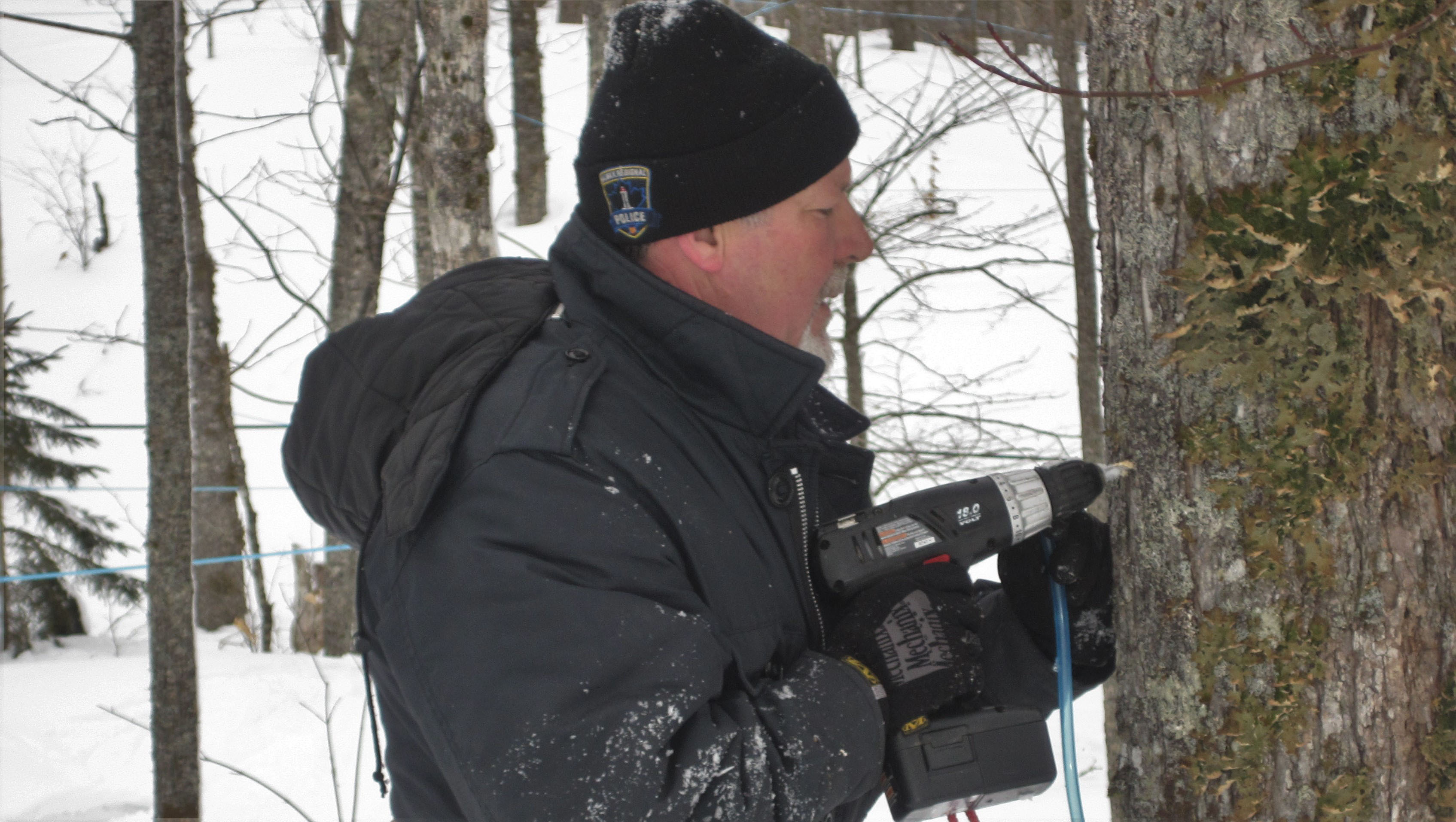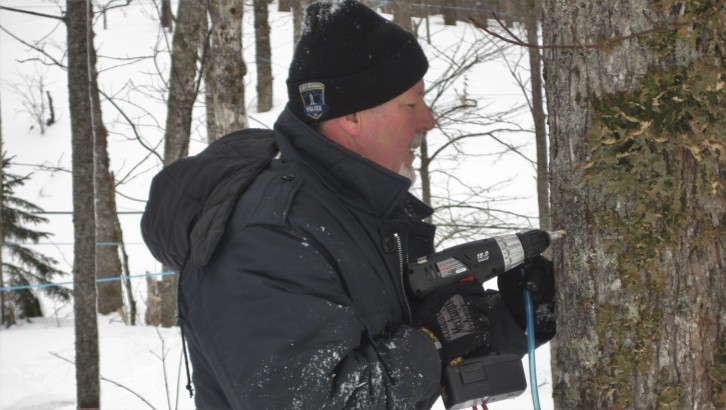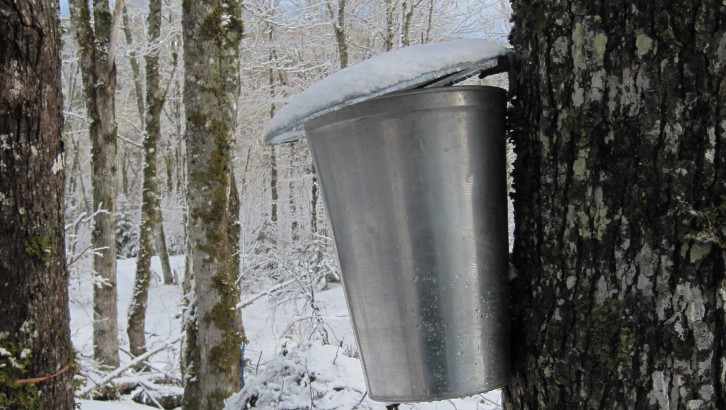Agriculture
Maple syrup tapping off to early start
Warm weather means smaller yield for N.S. maple farmers

caption
Curtis Pyke drill taps a tree.
caption
Curtis Pyke drill taps a tree on his farm in Greenfield, N.S.Nova Scotia’s recent warm weather is great for street hockey and long walks through Point Pleasant Park, but for local maple farmers it’s causing problems.
Margaret Pyke runs CJ Maple Products in Greenfield, N.S. with her husband, Curtis. She predicts that her farm’s crop will be down by a quarter this year, due to the balmy winter temperatures.
“This year where we didn’t have the coldness and the frosting of the ground, (so) the volume of sap won’t be there. Right now, it’s getting warm quick,” she says.
For the past couple of weeks sap has been flowing well at her farm. Sap flow is caused by pressure differences in trees when temperatures reach below freezing at night and above freezing during the day.

caption
A sap bucket collects sap from a tree on Margaret and Curtis Pyke’s farm.Pyke says CJ Maple Products has already produced about half of the maple syrup and butter they expect to get this year. Normally in early March they would only be starting to refine the sap.
But early starts often mean early ends in the maple season.
Warm weather can cause many problems, including making it more difficult to tap trees, but Pyke is mostly worried that sunny skies will lull her trees out of their hibernation.
Once maple trees bud, their sap turns sour and can’t be used for maple syrup.
“When you get this very quick warming trend the sap won’t flow very well at all because it’s not going back into the roots at night and coming back up in the day. It’ll just come up, the trees will bud and that will be the end of it.”
The good news for Pyke’s farm is that the product is darker than usual this year. She attributes this to the fact that there isn’t snow on the ground keeping the trees’ roots very cold.
She says that, although a light coloured maple syrup sells better overseas for aesthetic reasons, dark is the sought after syrup in Nova Scotia, where she sells.
And for consumers, the early harvest means that this year, fresh, locally made maple syrup will be on shelves sooner than usual.

